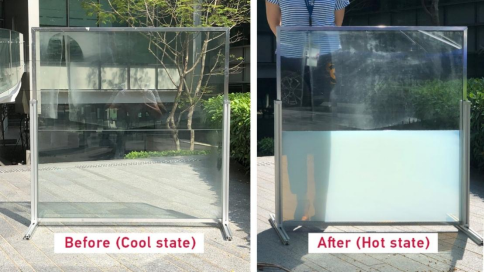Intelligent windows are able to dynamically change their optical properties to achieve adjustments in brightness, transparency or light energy. This technology can be widely applied in functional glass market, such as energy-saving glass, privacy glass, vehicles/airplane windows and eyeglass etc.
Lately, the team collaborated with Lee Pooi See project group from NTU and Yin Jie project group from North Carolina State University to review the development of intelligent windows in recent years, categorising the researches by different control methods (stimulus response), and emphasising functional colour changing materials, equipment design, performance enhancement and prospects. Related findings are published in the Advanced Energy Materials journal, with SSIJRI as the first affiliation.
Abstract
A smart window that dynamically modulates light transmittance is crucial for building energy efficiently, and promising for on‐demand optical devices. The rapid development of technology brings out different categories that have fundamentally different transmittance modulation mechanisms, including the electro‐, thermo‐, mechano‐, and photochromic smart windows. In this review, recent progress in smart windows of each category is overviewed. The strategies for each smart window are outlined with particular focus on functional materials, device design, and performance enhancement. The advantages and disadvantages of each category are summarized, followed by a discussion of emerging technologies such as dual stimuli triggered smart window and integrated devices toward multifunctionality. These multifunctional devices combine smart window technology with, for example, solar cells, triboelectric nanogenerators, actuators, energy storage devices, and electrothermal devices. Lastly, a perspective is provided on the future development of smart windows.

Smart Windows: Electro‐, Thermo‐, Mechano‐, Photochromics, and Beyond
Author information:Yujie Ke, Jingwei Chen, Gaojian Lin, Shancheng Wang, Yang Zhou, Jie Yin, Pooi See Lee, Yi Long
Advanced Energy Materials, First published:05 September 2019, DOI:10.1002/aenm.201902066


